Earth Day 2020
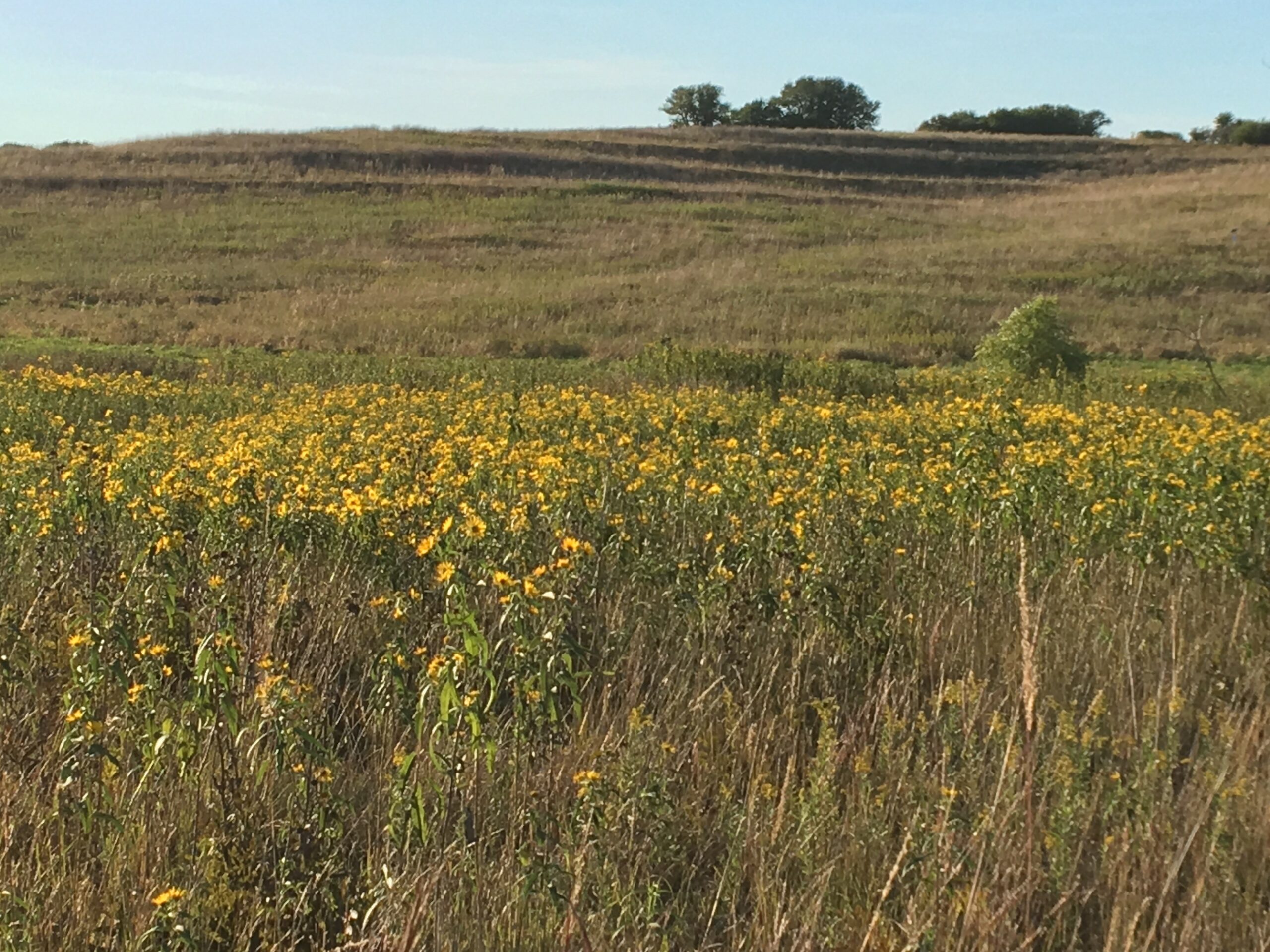
By Tina Spencer
Author Rachel Carlson’s writings in the early 60’s helped spark the global environmental movement which would eventually lead to the establishment of Earth Day. Ms. Carson’s book, Silent Spring, showed her passionate concern for the future of the planet and all life on earth calling imploring humans to act responsibly, carefully and as stewards of the living earth.
Earth Day began because of a unified response to an environment in crisis – oil spills, smog, rivers so polluted they literally caught fire. On April 22, 1970 millions of Americans took to the streets, college campuses and hundreds of cities to protest environmental ignorance and demand a new way forward for our planet with the goal of raising awareness about mankind’s role in protecting our natural world. Environmental protection is important to our physical health and the health of our planet.
This year will mark Earth Day’s 50th anniversary and the theme is climate change. Climate change impacts us in many ways: agriculture and food security, air pollution, drinking water supply, transportation, energy, ecosystems/biodiversity, and more—all of which impact human health.
Earth Day has become a popular day for many communities to gather together and clean up litter, plant trees, or simply reflect on the beauty of nature. For 50 years Earth Day has increased awareness of the planet we live on, our impact on the environment, and how that changed environment impacts us.
Despite the global coronavirus pandemic, Earth Day can and will be celebrated in many ways. Although people can’t gather in large groups, there are many online events being offered, in addition to activities you can do at home on your own. For ideas to inspire or motivate you, check out:
- The largest digital Earth Day event, Earth Day Challenge 2020,
- Earth911’s complete guide to Earth Day 2020,
- The Smithsonian’s Earth Optimism Summit that will showcase stories of large and small actions can be successful.
- The Old Farmer’s Almanac guide to activities
It’s also not too late to join our Ecochallenge team! We’re currently in 10th place, and are beating UNO, but would love your help. Our earth needs your help, too. Individual actions do make a difference and global change requires all of us taking action. We all need to work together to protect the environment to make it a healthier place to live.
Free B-cycle Memberships, Vote for RePurpose It Contest Entries

By Melanie Stewart
The RePurpose It Contest has some great projects to show off. Your colleagues (and their kids) are incredibly talented and creative! We hope looking at these entries will inspire you to look at items you have in your home a different way, helping you save money and reduce waste. Voting is open, so make sure you check out all the entries here and vote here.
Don’t forget, you can earn prizes by participating (at your own time/pace) in our internet scavenger hunt. It’s also not too late to join our Ecochallenge team!
Heartland Bike Share wants to thank everyone involved in healthcare for their extraordinary efforts of late, even if you aren’t a direct patient care provider. To get a free annual membership (valued at $100):
- Go to HeartlandBcycle.com or the BCycle App,
- Create a login
- Purchase an annual membership using the promo code THXHEROES.
- This promo code is only good through 4/30/20
- You will need to enter a credit card, even though you aren’t being charged. Once you click apply, your final payment will reflect $0.00.
- You must use your UNMC/Nebraska Medicine/Clarkson College email address for the promo code to work.
Once you have signed up, you can check out a bike at any station with the BCycle App or at the kiosk. A live map of all stations & bike availability (including electric assist bicycles!) can be found on the website & the BCycle App, and the 42nd and Dewey campus has 6 stations.
Your membership is good for a year, but if you take a bike out now, don’t forget to maintain appropriate social distancing—at the kiosk and on the trails. Heartland B-cycle is taking extra steps to disinfect high-touch surfaces and you can learn more here.
That said, bicycles can be returned to any station at any time. All users should take their own precautions disinfecting bikes before you ride, wearing gloves, washing your hands, and not touching your face. Don’t forget your helmet!
Healthy, Sustainable, Actions During a Pandemic
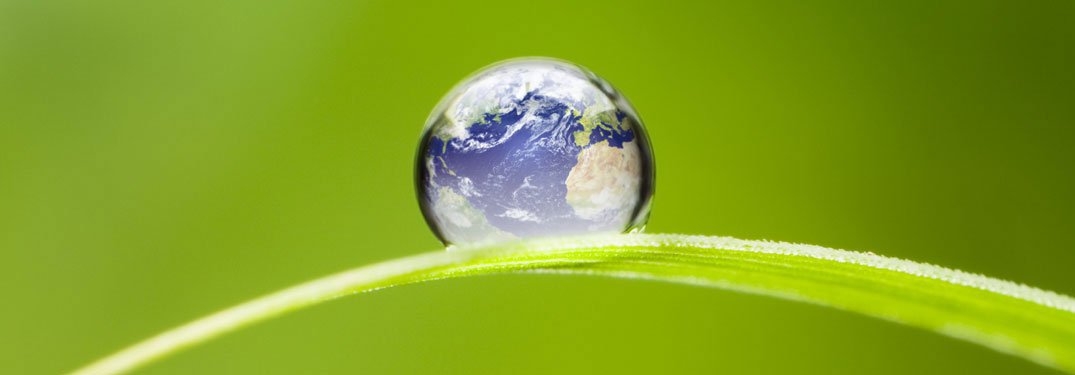
By Melanie Stewart
It’s April and that means it’s Earth Month—even if it doesn’t really feel like it. COVID-19 has dominated our lives for the past month and forced all kinds of changes, with many working from home and/or trying to keep kids occupied.
We recognize the seriousness of the situation, but also know that this could be a time to make changes that will have a positive impact—on your family’s health, your pocketbook, and the environment around you.
The first is a home waste audit. With limited trips outside your home, the waste stream you are responsible for is easy to track—and make changes. Count the number of bags of trash vs. recyclables for a week (or day, whatever is easiest) and then work with everyone in your family to get the right things in the right container. Maybe your spouse doesn’t know the gable-topped milk/juice containers can be recycled, or maybe your family needs a place to collect glass. Check out KeepOmahaBeautiful’s page or Wasteline for more information. If your family has a lot of organics, consider composting in your backyard, or through a compost club.
Don’t forget to reduce! Replace disposable items with reusable–no need to hoard paper towels/napkins if you have fabric alternatives, and they’ll save you money in the long run. Consider the packaging of items you buy and find alternatives whenever possible.
Other possibilities:
- Swap out some home cleaning products with less toxic, cheaper, versions. LiveGreen has some recipes we tested/like, and more on our Pinterest page (including reusable disinfecting wipes!).
- Eat more fruits/veggies, more locally grown items, less packaged food, and consider reducing the amount of meat you consume. Try out some new recipes, and have your kids help! If you have a green thumb, consider planting a garden and plan a neighborhood vegetable exchange.
- Spring cleaning? Don’t forget to set aside your recycling for our collection event. Clothing, toys, and goods can be donated or sold for extra money on a variety of apps or websites. Don’t forget to repair what you can.
- If it’s safe to do so, get outside. Movement/exercise is good for you and relieves stress. If you can spend time in nature, even in your backyard, your mental health will benefit.
- Follow LiveGreen Nebraska on Facebook. We’ll continue to share activities that individuals and families can do to have fun, learn something, and keep busy.
Earth Month Activities

Earth Month is going to look a little different this year, but COVID-19 isn’t going to stop us from celebrating the 50th anniversary of Earth Day. We are going to postpone the personal document shredding/electronic recycling event to a future date, but we will still have it. So, if the changes to your weekend plans includes some spring cleaning, keep all your electronics, techno trash, batteries, eyeglasses, and paper for the big event. For details on what we will and won’t accept, go here.
We still hope to have free trees to share for Arbor Day, and if so, we’ll find a way to do that while keeping everyone safe.
We are still having the RePurpose It contest. We know that recent events may have changed things, so we have extended the submission deadline to April 6th. Don’t forget that you can enter more than one item. Also, while the project needs to be done by you, it doesn’t have to be done by only you. If you have kids (or spouse?) that needs a project while they are at home and they want to do most of the work, that’s great! Don’t overthink this, just find something that’s outlived its original purpose, and find a different way to use it. Check out our webpage for rules and helpful hints and our Pinterest page for inspiration.
We have also set up an EcoChallenge team. It’s free, and entirely online. You get to pick the topics and actions you want to participate in (can be changing a habit, learning about a new topic, or completing a single action) to earn points. EcoChallenge also gives out prizes. Not only can you join our team—anyone can! So if you have kids, friends, family, neighbors, etc. that you think would be interested, we’d love to have them on our team. UNO has officially challenged us to a battle, and we need to defend our title!
We will also being doing our first ever online scavenger hunt. You’ll be able to participate at your convenience and everything will be online. Participation will help you learn more about sustainability as well as campus programs and successes. We’ll have lots of prizes to hand out for this too! Scavenger hunt items will be posted on this page on April 6th.
Chargepoint Stations Have Arrived
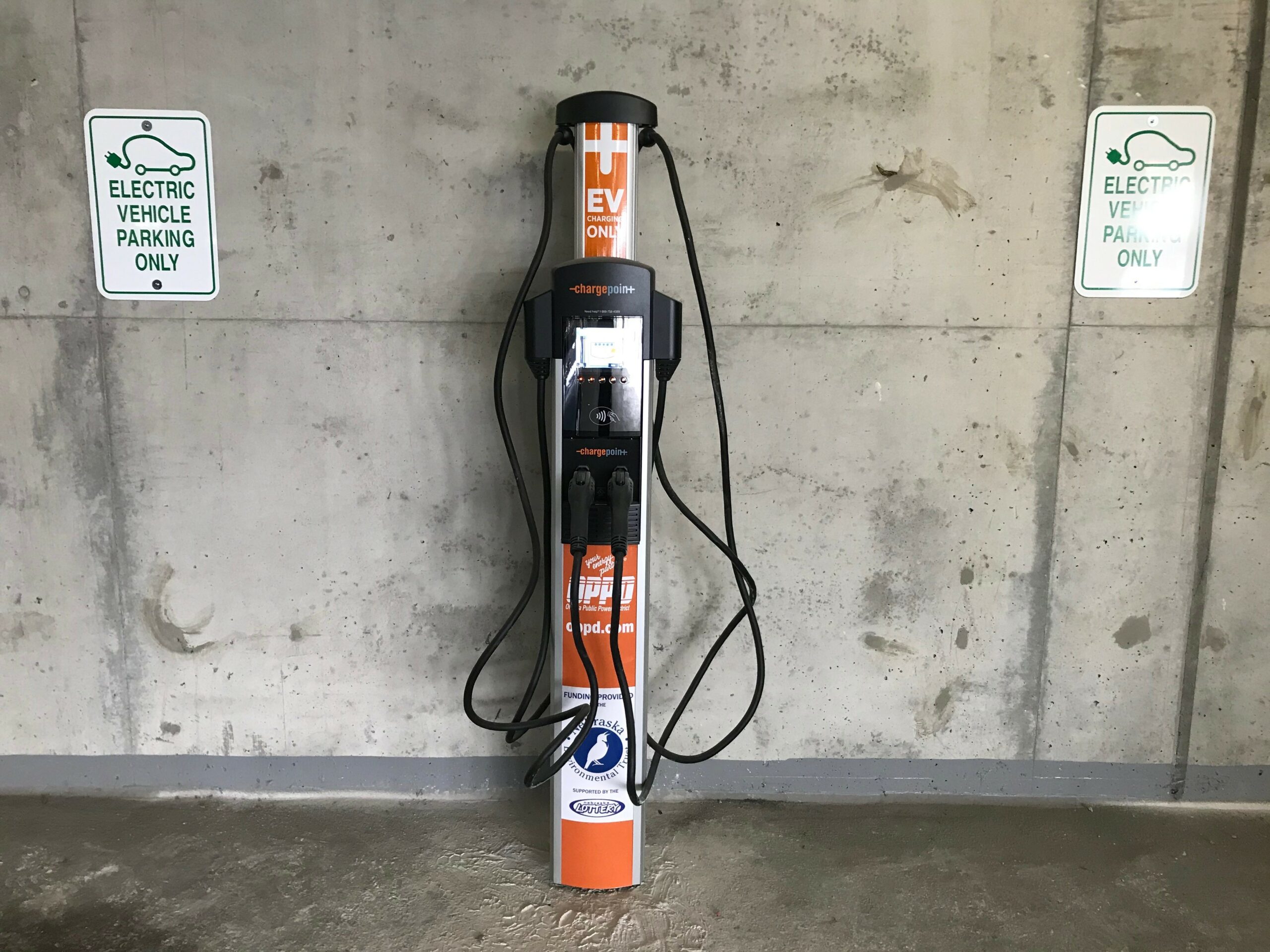
By Melanie Stewart
Chargepoint stations are on campus and ready to be used! These stations will charge personal electric vehicles (EV) faster than a standard outlet, with a full charge possible in 4 hours or less.
These stations are a product of a partnership with OPPD and with a grant from the Nebraska Environmental Trust (NET) in coordination with the Nebraska Community Energy Alliance (NCEA).
There are 2 locations on campus:
1 station, 2 stalls in Lot 34 on Emile between Shackelford Hall and the Central Utility Plant
1 station, 2 stalls in Lot 21 by the entrance to the middle level of the Lauritzen Outpatient Center
The rate to charge is $0.50 for up to 4 hours daily. After 4 hours the rate is $3 per hour. Please limit the usage of the charging station to sessions no longer than 4 hours per day. Failure to observe these restrictions may subject the vehicle to a violation, in addition to the higher hourly rate fee. These stalls are for active charging parking only. Once you are done charging, the vehicle must be moved to allow other users to access the EV Charging Station. Both charging stations are available to students, colleagues, and the public.
To use a Chargepoint station you can sign up for free online at chargepoint.com. Drivers can use a card Chargepoint issues to start a charging session, or use the free Chargepoint app, both of which are good at the nearly 110,000 Chargepoint stations. Different Chargepoint stations may charge different amounts per hour. Many more stations are available across the Omaha metro area and Nebraska.
Providing charging stations for electric vehicles is an important step in advancing electric vehicle use. As efficiency goes up and OPPD increases the amount of renewable energy they provide, emissions will go down. This is better for our local air quality, and our health.
NCEA provides monthly reports that show the cumulative amount of energy used from the Nebraska charging stations, the economic benefits, and the harmful emissions reduced as a result. “It’s an impressive amount of emissions and we are excited to see our impact.” said Neal Buxcel, Director of Utilities and Electrical Operations.
Rebates on electric vehicle purchases are available from OPPD/NCEA, certain car dealers, and the federal government; details found here.
Social Justice, Black History Month, and Sustainability
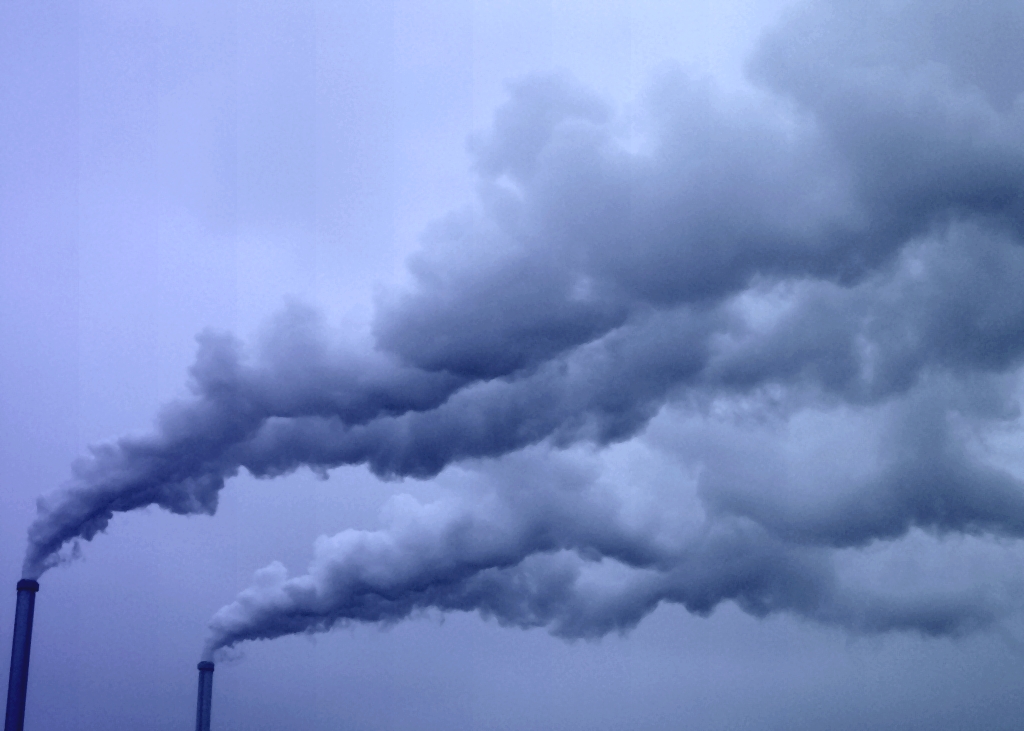
By Melanie Stewart
Last week the United Nations marked World Day of Social Justice, promoting equality, removing barriers, and helping people living in poverty, unsafe conditions, and/or without dignity. The “field” of sustainability has advanced beyond what we would mostly classify as “environmental sustainability”—taking care of the physical environment. While that’s still important as we are all products of our environment, there are “other” areas of sustainability that we need to address separately.
Social justice and sustainability intersect in equity and in health (our mission!). In North America, virtually all areas where low-socioeconomic-status communities are located experience higher concentrations of air pollutants. As you likely know, air pollutants lead to a variety of health conditions—asthma, cancer, birth defects, etc. You may also know that in the United States, racial and ethnic minorities are more likely than non-minority groups to experience poverty. Given this, it’s not surprising that African Americans are exposed to pollutants and suffer the maladies they cause at a higher rate.
In honor of Black History Month, we offer a few pioneers in this important work.
Heather Toney, was the first African American, female, and youngest mayor of Greenville, MS and served as the regional administrator to the EPA, and currently leads the Moms Clean Air Force—a group of more than 1 million moms and dads fighting against air pollution and for climate safety to protect children’s health.
Dr. Robert Bullard is often listed as the father of environmental justice. He founded the Environmental Justice Resource Center at Clark Atlanta University, has authored 18 books, co-founded the Historically Black Colleges and Universities Climate Change Consortium, and has received multiple accolades and awards for his work.
Dr. Mildred McClain is a teacher and human rights activist. Her work with the Black Youth Leadership Development Institute has trained thousands of young people to be community leaders while also working to promote healthy lifestyles. She has led community gardens, health fairs, soil testing, and lead testing in children while creating major partnerships with the Department of Energy, the EPA, and the CDC.
Dr. Beverly Wright founded and is the executive director of the Deep South Center for Environmental Justice, which provides education, job placement, and health/safety training to climate impacted communities. She developed curriculum, runs a hazardous waste work training program, and has produced research related to environmental justice and superfund sites.
Sustainability Engagement Survey Results

Since 2012, the Med Center has conducted a sustainability engagement survey (SES) to gather input from employees. The results help to measure progress and inform strategies for achieving the sustainability goals outlined in the Sustainability Master Plan(SMP).
Our engagement score is one of our 6 SMP goals, and our new score is a 57. This is virtually unchanged from the last survey. You might think that’s not a good thing and while you aren’t wrong, you aren’t completely right either. This year we changed several survey questions to reflect how the field of sustainability has changed, in response to our changing world. Those questions essentially made the survey more difficult, and so it is harder to get a higher score. Had we scored the survey the same as before, our engagement score would have been higher.
We asked about different areas of sustainability that we previously hadn’t. We’ll talk about them more in the future, but they are: Regenerative Systems, Climate Resiliency, Long-Term Thinking, Social Sustainability, and Financial Sustainability.
These all relate directly to our mission. While we work “to create a healthy future for all” it has to include all of these aspects—sustainability isn’t a side project, it’s integral to how we operate as a business, as a provider of care, and as a resource user. I’m happy to report that a whopping 92% of survey takers think that it’s important for the Med Center to take active steps to be more sustainable and 81% believe sustainability aligns with our mission.
The other big number that comes from the SES is our mode split. This reflects the number of commuter trips coming to campus each day using active transportation (bus/bike/walk/carpool) and that number increased to 24%–our highest percent ever! This was the first survey that we asked about a compressed work week—a schedule that has been modified from its ‘traditional’ schedule. This could be working four, ten-hour days instead of working five, eight-hour days. Both UNMC and Nebraska Medicine have policies allowing specific position types to potentially modify their schedule and/or potentially work from home some days.
Finally, we finished the survey asking for your feedback on any topics. Thousands of you left us answers, and we’re reading them all. We appreciate the information you provided and will work them in to future projects.
Thank you for taking time to participate and provide valuable feedback!
Ready to Re-Purpose It?

After a 1-year hiatus, the RePurpose It contest returned last year, but participants had to use storage containers that were no longer needed in the library—and they did not disappoint.
This year we will go back to the original version of the contest. Participants can repurpose anything that has outlived its original intent and been transformed into something else. Entries will be featured on our webpage and open for voting by your fellow colleagues during Earth Month. Entries with the most votes will win prizes. We are confirming those now, we’ll let you know soon, but promise they’ll be good prizes!
Here are the basics of what you need to know; check our website for details and full contest rules.
- Use an item that is no longer serving its original purpose and transform it into something useful.
- Take before and after pictures and provide a brief description of what it was and is now.
- Don’t submit anything you submitted before.
- You can submit more than one item, but can only win once.
- Group projects are allowed.
- Submit your entry to LiveGreen@unmc.edu by March 29th.
Don’t have a project in mind? Concerned that you’re not crafty? Or handy with tools? Good news—you don’t have to be! Visit our RePurpose It Pinterest page to find no-tool/no-special-skill-required ways to repurpose items and make your life easier! Entries do not have to come from this page, it’s just there to help you with ideas—and maybe inspire you with other projects too.
Some projects are big and really impressive, but it’s often the simple things that are the most inspiring—projects that are repeatable by most people often have the most appeal. If you need further inspiration or places to find supplies, check out both locations of the Habitat for Humanity Restore. Their inventory changes weekly. Have items to help the cause? You can drop them off or contact them to arrange pick up.
Reclaimed Enterprises facilitates deconstruction of (as opposed to demolition) metro area buildings and saves items for sale and repurposing. Trim, doors, old growth lumber, they have it all. Contact them for more information.
Don’t forget to check out second hand stores in your area.
We’ll have more details on the events of Earth Month soon; but wanted you to have plenty of time to get your projects together.
Waste Audit Results
Operating a major medical center requires lots of materials, many of which end up in the landfill. As we work to achieve our Net Zero Waste goal (minimum 90% of all non-regulated waste diverted from landfill/incineration), it’s important to know what specific items are going to the landfill. We can then use this information to strategically guide our efforts.
Last year, we conducted a waste audit of 7 campus locations that capture 80% of the material sent to the landfill. Over the course of two months, over 3,000 pounds of trash were collected, sorted and measured. Major findings include the following:
- 36% of landfill waste is compostable.
- The largest portion of the compostable materials is paper towels.
- 21% of our landfill waste is recyclable using current programs (including cardboard, metal, paper and hard plastic).
- If all compostable and recyclable material were successfully diverted, the Med Center would have a 68% diversion rate.
- This would be the highest diversion rate of any medical center in the country.
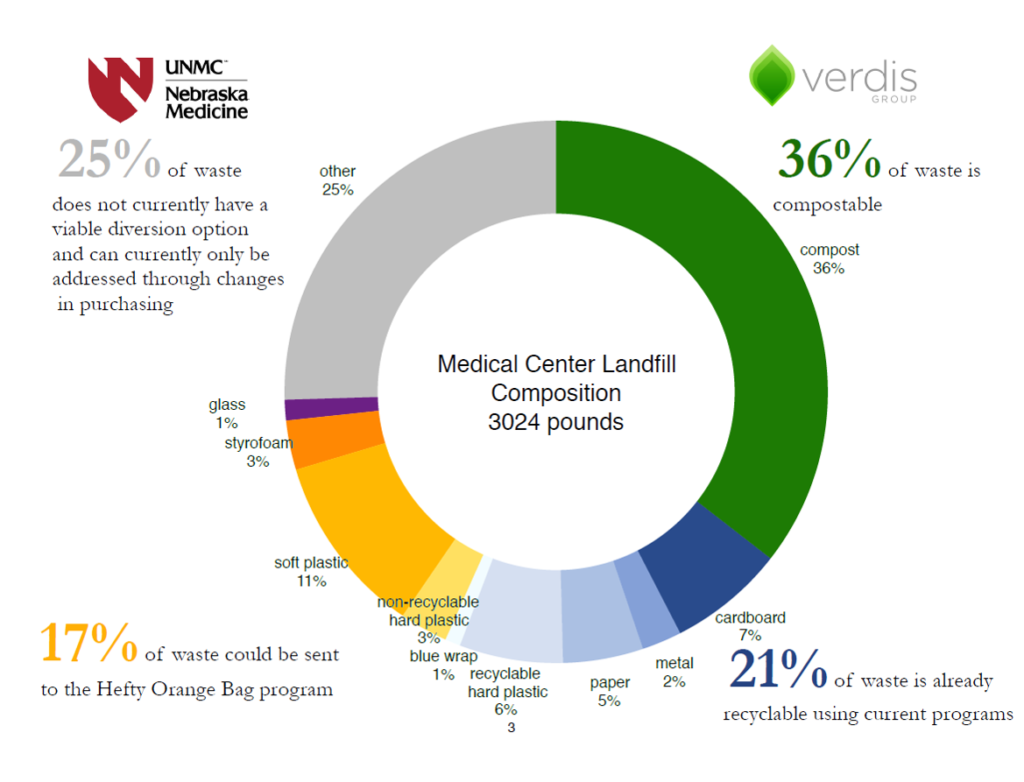
We need your help to improve and stop recyclables from going to the landfill. The single most effective thing we can do today is to recycle materials, like pop cans or cardboard, that we can and should be recycling already. Wondering what materials can be recycled at the Med Center? Check out the LiveGreen Recycling page for details.
You may have heard stories about cities struggling to find markets for recyclable materials, in part due to changes China has made. While that is true, Omaha is still recycling. In order to ensure our items are recycled, we need to do two things: 1) Put the item in the correct bin. This means no trash in the recycling bin as well as no cardboard in the paper bin, etc. 2) Remove food/liquid prior to recycling. Items don’t need to be super clean, but remember this process isn’t completely automated, people are involved in the process. If too many items are too gross to process or put people at risk, the entire load is sent to the landfill.
What else can you do? Whenever possible, reduce. Using less is always the best first choice, and that counts towards our goal too. You can bring your own silverware rather than using single-use plasticware, use electronic versions rather than printing, etc.
Your actions matter, even a seemingly small change can help improve health (our mission!).
A different kind of flue season
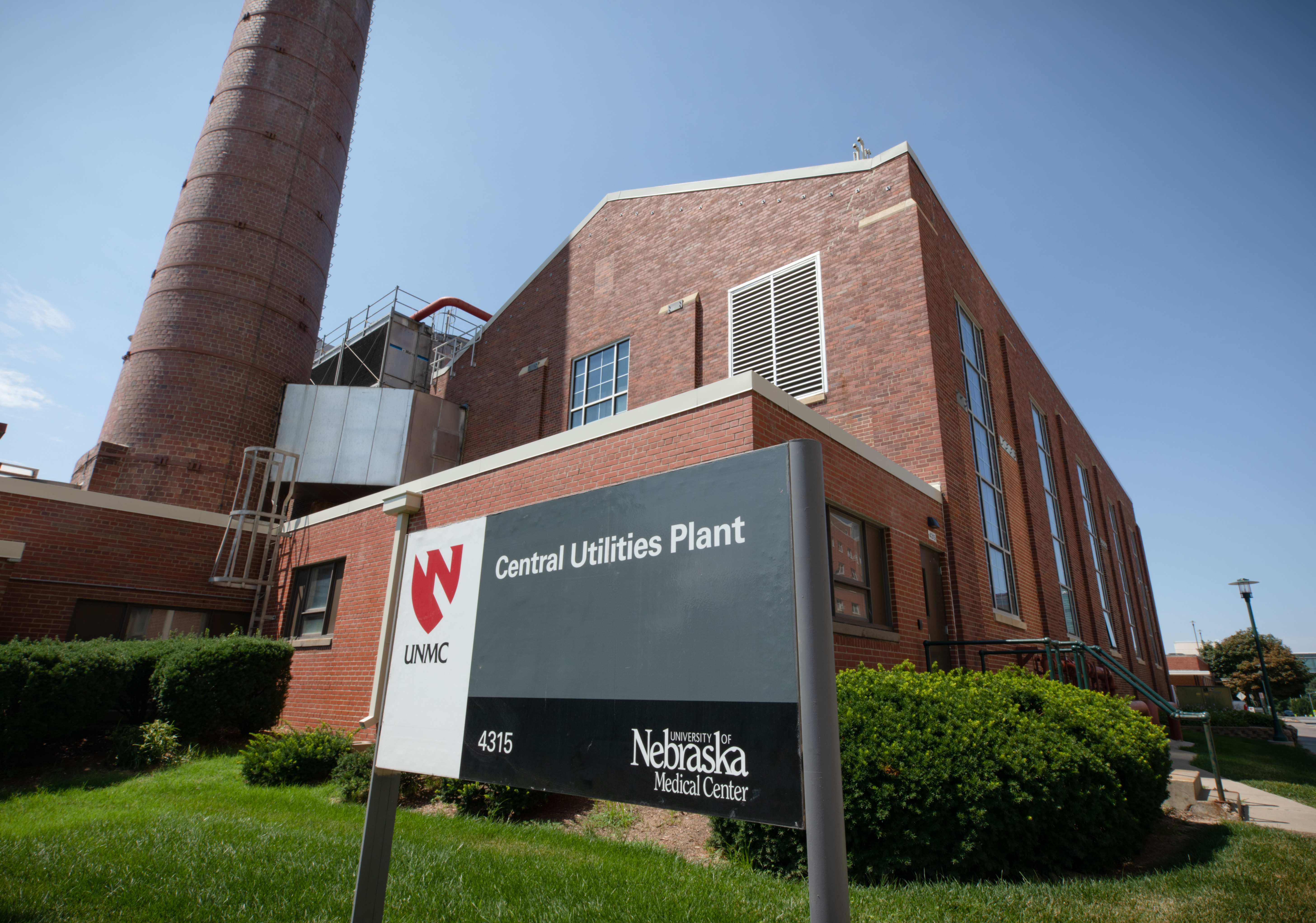
By Melanie Stewart
A new piece of equipment is poised to capture energy that previously would’ve been wasted — enough of it to heat three huge buildings. To explain how it works, a little lesson in how the utilities work at the UNMC/Nebraska Medical Center campus.
The Central Utility Plant (CUP) is the main hub for utilities (electricity, natural gas) coming into campus. From there electricity is distributed to buildings and the CUP cools buildings by producing chilled water, heats buildings by creating steam, and produces hot water. These processes use electricity and/or natural gas.
The “smoke” stack is equivalent to the vent on virtually all homes, it’s where the exhaust from burning natural gas leaves the building and where many of our greenhouse gas emissions come from. Just like houses, exhaust tends to be more visible when it’s cold out, as the temperature differential is greater. We are always producing hot water and heat (that’s the seemingly backwards part of energy curtailment) so we are always burning natural gas. Though the amount of exhaust coming out of our stack can vary based on time of day/campus activities, there is always exhaust.
A lot of what is exhausted is heat—but getting rid of heat while working to produce it, isn’t the most efficient process. That’s where the flue gas economizer comes in. Flue like a chimney flue, not the virus. The flue gas economizer is not your everyday piece of equipment. Operated by the CUP technicians, it pulls heat that would be exhausted out of the stack, and allows it to be used to as heat for buildings.
So how efficient is it?
When it’s cold outside and running at full capacity, it is capable of providing enough heat for the Lauritzen Outpatient Center, UNMC Center for Drug Discovery and Lozier Center for Pharmacy Science and Education, AND the new Dr. Edwin G. & Dorothy Balbach Davis Global Center.
You read that correctly: all three buildings can be completely heated with energy that would have been previously wasted. Pretty cool…or uh, hot, isn’t it?
Adam Poppleton, utilities operations supervisor said, “This equipment demonstrates not only our drive to reduce emissions, improve air quality, and positively impact health, but also to use innovative technology.”
In a one year time period the campus added more than a million square feet of built space (which doesn’t count the Davis Global Center) and that means energy use goes up and so do emissions. While the flue gas economizer doesn’t directly reduce emissions, it reduced the amount of increase; assisting with our goal to be Net Zero Building Emissions by 2030, and saving money on both capital equipment and utilities.
